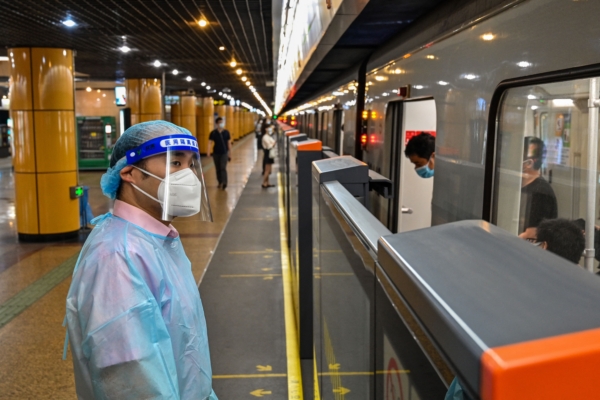China has been constructing subways in various cities, which have been criticized as wasteful investments. According to statistics from a Chinese professional organization, excluding central government subsidies, at least 26 cities across the country have subways that are running at a loss. In response to this, Kunming and Chongqing have started to increase subway ticket prices that have remained unchanged for many years, while Guangzhou and Foshan subways have implemented measures such as turning off air conditioning and reducing train frequency, turning the subways into steam chambers, which has sparked public dissatisfaction.
An article on the NetEase public account “Urban Finance and Economics” recently reported that in 2024, the total number of subway passengers in China reached 3.24 billion, but due to the high construction costs of subways, many city subways are still unable to generate profits from ticket sales alone and still require subsidies from the central government. Historically, most subway companies have relied on government subsidies to get by. According to the financial reports of major city subway companies compiled by RT Rail Transit, in 2024, at least 26 city subways were running at a loss after deducting government subsidies.
Of particular concern is the Shenzhen subway, which used to be the most profitable, but in 2024, it suffered a massive loss of 33.461 billion RMB, setting a historical record for the Chinese subway industry and reverberating through the capital market. This figure exceeds 10% of Shenzhen Metro’s net assets at the end of 2023 and surpasses the total net profit of Shenzhen Metro for the past five years.
Subways not being profitable is mainly due to their high construction and operation costs, coupled with their public service nature, making ticket prices subject to “restraint,” unable to cover costs completely. According to a report by the Urban Rail Association, current ticket revenue can only cover roughly 35% of operating costs on average.
In recent years, as land sales revenue has decreased and local government finances have tightened, various expenditures have started to be scrutinized. Subway companies have had to increase revenue and cut costs to alleviate the enormous pressure of operating costs.
Kunming’s subway saw its first fare increase in 13 years; Chongqing held a public hearing on adjusting subway ticket prices, possibly bidding farewell to the “2 yuan era”; Foshan subway has adopted an “extreme energy-saving” mode, dimming lights, raising air conditioning temperatures, and closing early, turning the subway into a steam box.
On April 15, Kunming subway reduced the number of kilometers passengers could travel for the initial fare, keeping the starting fare at 2 yuan. Previously, for every additional 1 yuan, passengers could travel 5, 7, 9, 11, or 13 kilometers, but after adjustment, this became 4, 5, 6, 7, or 8 kilometers.
On May 29, Chongqing held a public hearing on the city’s rail transit fare mechanism, presenting two new fare schemes that might increase the initial fare from 2 yuan to 3 yuan or reduce the number of kilometers passengers could travel.
Even with government subsidies, Foshan subway has struggled to evade losses. In 2024, Foshan subway had a revenue of 586 million, operating costs of 2.689 billion, and government subsidies of 2.081 billion, resulting in a net loss of 22 million RMB.
Starting from May 8, all lines operated by Foshan Metro Group closed 30 minutes earlier, and the train departure intervals were extended accordingly. Prior to this, Foshan subway stations were dimly lit, elevators were turned off for energy savings, and passengers felt the trains were “stuffy,” leading to numerous complaints from passengers.
Foshan subway has less passenger flow compared to Kunming. For example, based on April data this year, Foshan subway had 15.924 million passengers, fewer than Kunming and even cities with lower mileage such as Guiyang, Changchun, Fuzhou, Nanchang, Nanning, and others; the passenger intensity was only 0.35 million passengers/km/day, far below the safety threshold of 0.7 million passengers/km/day.
Foshan subway also revealed that they have implemented energy-saving measures such as turning off station lighting, adjusting air conditioning equipment, and escalator operation modes, estimating a 7.7% year-on-year reduction in electricity consumption, saving costs exceeding tens of millions.
Some netizens lamented that a city of Foshan’s population level should not be able to afford a subway.
In recent months, there has been an increasing number of passengers on social media complaining about the stuffiness in Guangzhou subways and the turning off of advertisements.
In 2024, Guangzhou subway had a revenue of 23.062 billion RMB, but its costs amounted to 24.268 billion RMB, with a net profit of only 22 million RMB. Without the 741 million RMB government subsidy, it would also be in a loss-making state.

